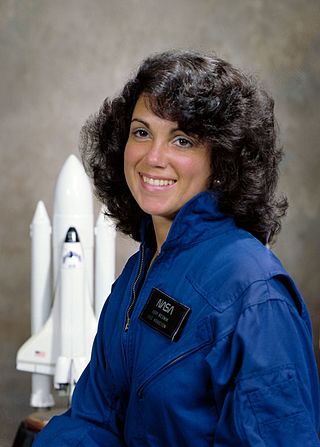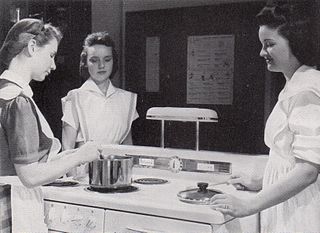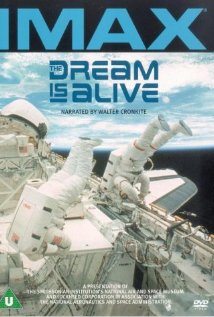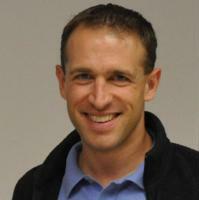
Ellison Shoji Onizuka was an American astronaut, engineer, and USAF Flight test engineer from Kealakekua, Hawaii, who successfully flew into space with the Space Shuttle Discovery on STS-51-C. He died in the destruction of the Space Shuttle Challenger, on which he was serving as Mission Specialist for mission STS-51-L. He was the first Asian American and the first person of Japanese origin to reach space.
Educational games are games explicitly designed with educational purposes, or which have incidental or secondary educational value. All types of games may be used in an educational environment, however educational games are games that are designed to help people learn about certain subjects, expand concepts, reinforce development, understand a historical event or culture, or assist them in learning a skill as they play. Game types include board, card, and video games.

Judith Arlene Resnik was an American electrical engineer, software engineer, biomedical engineer, pilot and NASA astronaut who died in the Space Shuttle Challenger disaster. She was the fourth woman, the second American woman and the first Jewish woman of any nationality to fly in space, logging 145 hours in orbit.
Situated learning is a theory that explains an individual's acquisition of professional skills and includes research on apprenticeship into how legitimate peripheral participation leads to membership in a community of practice. Situated learning "takes as its focus the relationship between learning and the social situation in which it occurs".

The Teacher in Space Project (TISP) was a NASA program announced by Ronald Reagan in 1984 designed to inspire students, honor teachers, and spur interest in mathematics, science, and space exploration. The project would carry teachers into space as Payload Specialists, who would return to their classrooms to share the experience with their students.

Experiential education is a philosophy of education that describes the process that occurs between a teacher and student that infuses direct experience with the learning environment and content. The term is not interchangeable with experiential learning; however experiential learning is a sub-field and operates under the methodologies of experiential education. The Association for Experiential Education regards experiential education as "a philosophy that informs many methodologies in which educators purposefully engage with learners in direct experience and focused reflection in order to increase knowledge, develop skills, clarify values, and develop people's capacity to contribute to their communities". Experiential education is the term for the philosophy and educational progressivism is the movement which it informed. The Journal of Experiential Education publishes peer-reviewed empirical and theoretical academic research within the field.

Experiential learning (ExL) is the process of learning through experience, and is more narrowly defined as "learning through reflection on doing". Hands-on learning can be a form of experiential learning, but does not necessarily involve students reflecting on their product. Experiential learning is distinct from rote or didactic learning, in which the learner plays a comparatively passive role. It is related to, but not synonymous with, other forms of active learning such as action learning, adventure learning, free-choice learning, cooperative learning, service-learning, and situated learning.

Bonnie Jeanne Dunbar is an American engineer and retired NASA astronaut. She flew on five Space Shuttle missions between 1985 and 1998, including two dockings with the Mir space station.

The Space Mirror Memorial, which forms part of the larger Astronauts Memorial, is a National Memorial on the grounds of the John F. Kennedy Space Center Visitor Complex on Merritt Island, Florida. It is maintained by the Astronauts Memorial Foundation (AMF), whose offices are located in the NASA Center for Space Education next door to the Visitor Complex. The memorial was designed in 1987 by Holt Hinshaw Pfau Jones, and dedicated on May 9, 1991, to remember the lives of the men and women who have died in the various space programs of the United States, particularly those of NASA. The Astronauts Memorial has been designated by the U.S. Congress "as the national memorial to astronauts who die in the line of duty".

The Kennedy Space Center Visitor Complex is the visitor center at NASA's Kennedy Space Center on Merritt Island, Florida. It features exhibits and displays, historic spacecraft and memorabilia, shows, two IMAX theaters, and a range of bus tours of the spaceport. The "Space Shuttle Atlantis" exhibit contains the Atlantis orbiter and the Shuttle Launch Experience, a simulated ride into space. The center also provides astronaut training experiences, including a multi-axial chair and Mars Base simulator. The visitor complex also has daily presentations from a veteran NASA astronaut. A bus tour, included with admission, encompasses the separate Apollo/Saturn V Center. There were 1.7 million visitors to the visitor complex in 2016.

Space Camp is an educational camp in Huntsville, Alabama, on the grounds of the U.S. Space & Rocket Center museum near NASA's Marshall Space Flight Center. It provides residential and educational programs for children and adults on themes such as space exploration, aviation and robotics. The camp is run by a state government agency, the Alabama Space Science Exhibit Commission. More than 900,000 campers have graduated since 1982, including several who became astronauts.

STS-51-L was the 25th mission of the NASA Space Shuttle program and the final flight of Space Shuttle Challenger.

Space Center Houston is a science museum that serves as the official visitor center of NASA Johnson Space Center in Houston. It was designated a Smithsonian Affiliate museum in 2014. The organization is owned by NASA, and operated under a contract by the nonprofit Manned Spaceflight Education Foundation, a 501(c)(3) organization. The Johnson Space Center is the home of Mission Control and astronaut training.
The Discovery Science Center and Planetarium is a hands-on science center in Bridgeport, Connecticut, that serves as both a tourist destination and an educational resource for area schools. The Discovery Science Center provides dynamic, hands-on STEM experiences designed to resonate with the innate curiosity, learning desire, and spirit of exploration of visitors, encouraging young learners to ask questions, solve problems, and engineer solutions today so they are better prepared to embrace the challenges of tomorrow.

The Dream is Alive is an American IMAX documentary film, released on June 1, 1985, about NASA's Space Shuttle program. The film was narrated by Walter Cronkite, and directed by Graeme Ferguson.
An instructional simulation, also called an educational simulation, is a simulation of some type of reality but which also includes instructional elements that help a learner explore, navigate or obtain more information about that system or environment that cannot generally be acquired from mere experimentation. Instructional simulations are typically goal oriented and focus learners on specific facts, concepts, or applications of the system or environment. Today, most universities make lifelong learning possible by offering a virtual learning environment (VLE). Not only can users access learning at different times in their lives, but they can also immerse themselves in learning without physically moving to a learning facility, or interact face to face with an instructor in real time. Such VLEs vary widely in interactivity and scope. For example, there are virtual classes, virtual labs, virtual programs, virtual library, virtual training, etc. Researchers have classified VLE in 4 types:

Christopher E. Gerty is an American aerospace engineer who worked on NASA's Constellation Program. Gerty is an advocate of NASA's Open Government Initiative and is a leading voice on the concept of participatory exploration and collaboration. He has fifteen years of experience working on complex, technology-intense projects at NASA. Gerty served as an aquanaut on the NASA Extreme Environment Mission Operations 13 crew.

Astronaut training describes the complex process of preparing astronauts in regions around the world for their space missions before, during and after the flight, which includes medical tests, physical training, extra-vehicular activity (EVA) training, procedure training, rehabilitation process, as well as training on experiments they will accomplish during their stay in space.
Dr. Yajaira Sierra-Sastre is a Puerto Rican materials scientist, educator, and aspiring astronaut. She was part of a six-person crew, and the only Hispanic, selected to participate in a four-month-long, Mars analog mission funded by NASA. Sierra-Sastre aspires to become the first Puerto Rican woman to travel to outer space.

Sian Hayley "Leo" Proctor is an American commercial astronaut, geology professor, and science communicator. She was also the education outreach officer for the first Hawai’i Space Exploration Analog and Simulation (HI-SEAS) Mission.

















